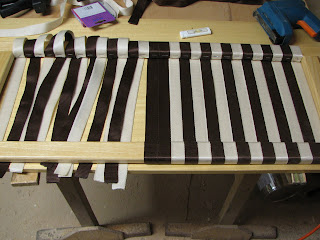



So far, the canoe has been on the water for about 10 days, everything from lakes, to class 1 and 2 white water on the Soča river. It handles very nice, I also did some surfing on a river wave, and it handles that with excellence. I promise to make a video of that, as it is quite a sight to see a 5m canoe surfing with such grace.
The only problem is when I am alone in the canoe, and the wind blows, but I have expected that. With the whole family in it and all the gear, it handles the wind with no problems.
It also serves as a playground for kids when we are on the beach, so, the kids love it and that is the most important!
The first scratches are there already, and I intend to put more of them on the canoe:)!
















































